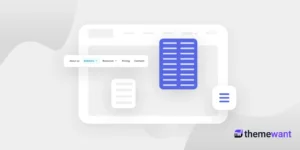Are visitors reaching your hotel booking page only to leave without completing their reservation? You are not alone. Booking abandonment is one of the biggest challenges hotel websites face today. Each missed booking represents lost revenue and a missed opportunity to build guest loyalty.
But the good news is you can change that. By applying proven strategies, you can reduce abandonment rates and turn more browsers into confirmed guests. In this blog post, we’ll show you exactly what works and how to put it into action on your own hotel website.
So, without further ado, let’s dig deeper.
Proven Strategies to Reduce Booking Abandonment Rates on Your Hotel Website
When guests abandon their booking halfway, you’re not just losing a sale but you’re losing trust and potential loyalty. A seamless, reassuring booking journey is key to turning lookers into bookers.
Here are 10 proven strategies to help you recover those lost reservations and boost conversions.
Optimize your booking engine for speed and simplicity
A slow-loading or cluttered booking engine is one of the biggest culprits behind booking abandonment. When guests encounter lag, technical glitches, or too many steps, they’re more likely to leave before completing the process. Streamlining the booking journey—by reducing page loads, simplifying steps, and minimizing distractions—makes it easier for users to stay focused and convert.
Your engine should support autofill for returning guests, responsive mobile design, and a clear progress indicator so users know how many steps are left. Avoid long forms and unnecessary fields that feel like a chore. The quicker and simpler the process, the more likely users will complete their booking with confidence.
Display real-time availability and pricing
Uncertainty breeds hesitation. If users can’t tell whether their chosen dates or room types are available, they’re likely to exit and check elsewhere. Real-time availability paired with transparent pricing removes ambiguity and reassures users that what they see is accurate and ready to book.
Integrating a reliable booking calendar and dynamic pricing tool helps users make informed decisions on the spot. Avoid “Request a Quote” buttons and instead show exactly what’s available and at what cost—because clarity drives conversions.
Use exit-intent popups with incentives
Exit-intent popups are a powerful way to capture attention right before a user leaves. If someone moves their cursor toward the browser’s close button or switches tabs, a well-crafted popup can present a limited-time discount, free breakfast offer, or complimentary upgrade to sweeten the deal.
This gentle nudge reminds the user of the value they’re about to miss. Combined with urgency messaging or a promo code, it often gives hesitant users that final push to complete their booking.
Build trust with social proof and security signals
When guests trust your site, they’re more likely to follow through. Display recent reviews, star ratings, and user testimonials across booking pages. These forms of social proof make users feel reassured by others’ experiences and reduce fear of making the wrong choice.
In addition, clear security signals like SSL badges, secure payment gateways, and trust certifications (e.g., TripAdvisor awards or hotel association logos) show guests that their information is safe. Trust-building elements should be visible throughout—not just on the homepage.
Simplify your cancellation and refund policies
Unclear or overly strict cancellation policies can push potential guests away. Travelers want flexibility, especially when plans might change. Clearly outlining your refund policy and offering free cancellation within a set window can significantly improve confidence and encourage more bookings.
Display these policies upfront in easy-to-read language during the booking process—not just in fine print. Guests are more willing to commit when they know there’s an option to cancel or reschedule without a financial penalty.
Send abandoned booking recovery emails
Not all abandoned bookings are lost for good. By capturing email addresses early—perhaps during the room selection or guest information stage—you can trigger recovery emails if a user drops off. These emails can serve as friendly reminders and offer incentives like a discount or a link to resume where they left off.
The key is to personalize the follow-up message. Mention the dates or room type they were looking at and include a clear call-to-action to complete the booking. Timely and relevant emails can recover a significant portion of otherwise lost revenue.
Offer a guest account option — But don’t require it
Requiring users to create an account before booking is a major barrier. Many travelers prefer quick, friction-free transactions and are turned off by additional steps. Offering guest checkout keeps the process clean and user-focused.
After the booking is complete, you can still invite users to create an account to track their booking or receive loyalty rewards. This post-purchase approach respects their time while still offering future engagement opportunities.
Improve mobile booking experience
More than half of travelers book rooms on their phones, making mobile optimization essential. A site that looks great on desktop but fails on mobile will drive away valuable users. Your layout, buttons, and forms must be designed for small screens and thumb-friendly navigation.
Speed is just as important—optimize images, reduce scripts, and minimize load times for mobile. The entire journey, from browsing to payment, should feel as smooth as using a hotel app. A mobile-first experience is no longer optional—it’s expected.
Provide live chat or virtual assistance
Sometimes a potential guest has a simple question but no easy way to ask. This is where live chat or a smart chatbot can make a huge difference. Having support available during booking gives users a sense of personalized service and can quickly resolve doubts that might otherwise end the session.
You don’t need 24/7 staffing; even automated bots with pre-set responses can handle basic queries. Prominently placing your live chat icon on booking pages ensures guests feel supported from start to finish.
Create urgency with limited-time offers
Scarcity is a proven motivator. Highlight messages like “Only 2 rooms left at this price” or “Sale ends in 3 hours” to create a sense of urgency. When users feel they might miss out, they act faster.
Pair this with countdown timers, flash deals, or weekend-only discounts. Be honest with your urgency tactics—false scarcity damages trust—but when used ethically, it encourages quicker decisions and fewer drop-offs.
Final Thoughts
Reducing booking abandonment on your hotel website isn’t about guessing rather it’s about creating a smoother, smarter, and more trustworthy experience for your guests. Every second, click, and detail matters when travelers are deciding whether to commit.
By implementing these proven strategies like streamlining your booking engine, building trust, and offering timely incentives—you create a path that encourages users to complete their journey with confidence. The result? More confirmed bookings, happier guests, and a healthier bottom line for your hotel.









